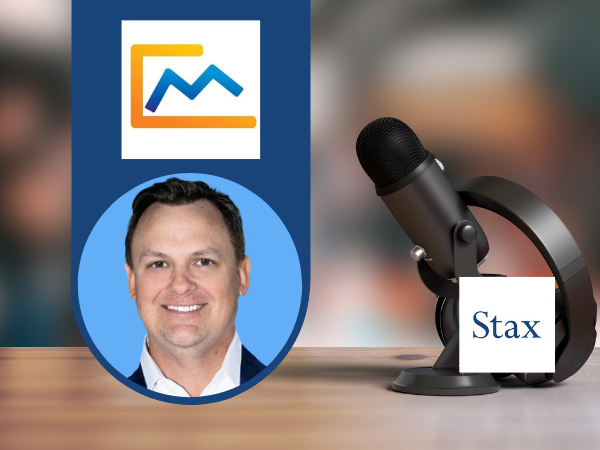Share
The playbook for winning through Buy and Build strategies has held firm for PE sponsors over the past decade. Finding sectors where proven management teams can uplift talent, drive operational scale, and enter new markets through add-ons has been the basis for many successful investments. There is also no doubt this playbook needs an update in today’s market— with more expensive capital and arbitrage levels shrinking, the onus is on sponsors to define and create value for platforms earlier and more systematically than ever before.
At Stax, for the PE firms we support (300+ engagements annually), we estimate 50% of transactions are either new platforms or strategic add-ons across all industries. By working closely with both new and mature platforms across industries, we have a front row seat to how PE clients and management teams are driving higher MOIC (Multiple on Invested Capital) for their platforms in today’s more challenging environment.
Here are a few of our learnings for how
Buy and Build strategies must be adapted today.
1. Don’t go full risk off, the best deals often come in the most challenging markets
Waiting until bid-ask (sponsor/sellers) spreads to narrow is always tricky. For many firms that have invested in previous down cycles, the reluctance to wait until there’s a certain market bottom is overcome by the opportunity to face less competitive bid scenarios for prime assets. A leading Buy and Build sponsor told us, “We have an opportunistic eye out for any add-ons we’ve had on our list that are struggling in this environment.”
Good companies caught up in a downcycle could be highly accretive as near-term earnings pressures make companies cheaper on a relative basis and often dampen seller expectations. PE firms that are planning to be active in this environment have endorsed full sector screening and pre-diligence activities to get in front of potential add-ons outside of competitive deal processes.
2. Avoid the year-one honeymoon through rapid, evidence-based diagnostics
Even the strongest management teams have the tendency to ease up during year one of ownership. In a more volatile operating environment, a highly systematic process to define value creators early is recommended.
It starts with a simple, analytical, evidence-based view of a few common levers of value that can quickly generate returns for both the add-on and the new platform:
- Cross-Sell – What new SKUs added to the combined portfolio are most commonly bought together, bundled, or add value to current products?
- Pricing – How do new brands and products fit within each product category and where do we have the opportunity to re-position these brands/products to achieve higher price realization?
- Customers – What are the net new customer relationships across entities which can now be targeted by sales and marketing under an integrated customer loyalty offer?
- Sales productivity – With a combined salesforce, how can we re-align territories and coverage to maximize our reach into our targeted accounts and segments?
- Operations - What shared operational costs and functions can we quickly optimize (better rates, elimination of duplicated efforts, greater scale efficiencies)?
The key here is to take a highly granular, transaction level analytics-based approach to unearth drivers of performance across customers, products, geographies and channels. For example, it is not uncommon for us to find 3 to 5x differences in account profitability - same national account but significant variation in profitability by location due to local pricing, product purchase mix and cost to serve dynamics. With today’s data science techniques and tools, the ability to structure and analyze massive data sets is a now a matter of weeks, not months.
3. Organic growth matters the most
Revenue growth is king. In a recent Baird study (Best Exits 2022), 60% of all best exits were Buy and Build plays, with a majority of these exits citing organic revenue growth as the most critical aspect of the narrative to prospective buyers. The key enabler for organic growth – a focus on go-to-market and digitization of the organization to support organic growth.
Morgan Stanley’s Head of Private Equity recently remarked in an interview when asked about the top levers for value creation, “It’s been striking to watch what you can do to the top line of a company through leveraging simple digital marketing and analysis... simple stuff that is not typically the domain expertise of a small, scrappier, mid-market business. Taking organic growth rates from 8 to 9% to mid to high teens just through more efficient sales and marketing.”
In today’s environment, this means the use of predictive analytics to target customers and segments where demand is healthiest, coupled with test, learning, and iterating models to optimize both marketing (e.g., where do we get the most bang per buck for new leads) and customer conversion (e.g., what can we glean from high-win rate patterns).
At Stax, we often see add-ons that have underinvested in sales and marketing or rely too heavily on the heroics of a founder to sustain current sales performance. While this may be seen as a red flag, there also lies an opportunity, where a sale to a growth-oriented platform often serves as the catalyst to getting to the next level of growth. Commercial diligence with an eye towards organic growth potential would identify and quantify the upside potential under these conditions.
4. Prepare for exits well in advance (~15 to 18 months)
More than 70% of all Buy and Build PE exits are to strategic buyers or to other PE firms that are specifically looking for well-run platforms in their power alleys to bring to the next level of scale and growth. While typical hold periods for assets are greater than four years, we are seeing an acceleration in potential exits for companies in a “sell the winners” dynamic to enable PE firms the ability to claim victories amidst greater uncertainty across their portfolios. This leads to much earlier exit planning efforts to position and guide future acquisitions for platforms towards strategic themes that appeal to a targeted set of potential trade or sponsor buyers.
How is this done? By backward engineering the most common investment themes to drive premium multiples in the space.
Grupo Bimbo (GB) is one of the global leaders in food and owner of iconic brands such as Sara Lee, Entenmann’s, and Arnold with close in $20B in global revenues. In this hypothetical example, where GB is highly attuned to assets that match these themes, an existing F&B platform may look to double down on a singular theme (such as a leader in more affordable, superfood snacking brands) and take advantage of the thesis that strategics like GB would see high value in bolting on local, innovative brands to its well-established distribution network.
Private equity is at a seminal moment where firms with a proven formula for value creation stand to have a pronounced advantage. The ability to underwrite and invest in top value creation initiatives early both de-risks deals and expands financial capacity for future add-on investments. In this environment, there is no better way to insulate against both macro and competitive risks than having a more regimented path to speed up EBITDA improvement.
About the Author
Vince Zosa is a Managing Director at Stax. Joining in 2022, Vince brings 25+ years of management consulting experience spanning across multiple industries such as industrials, financial services, high technology, and distribution. Vince graduated from the University of Virginia with a BS in Commerce and has an MBA from The Wharton School of the University of Pennsylvania.








